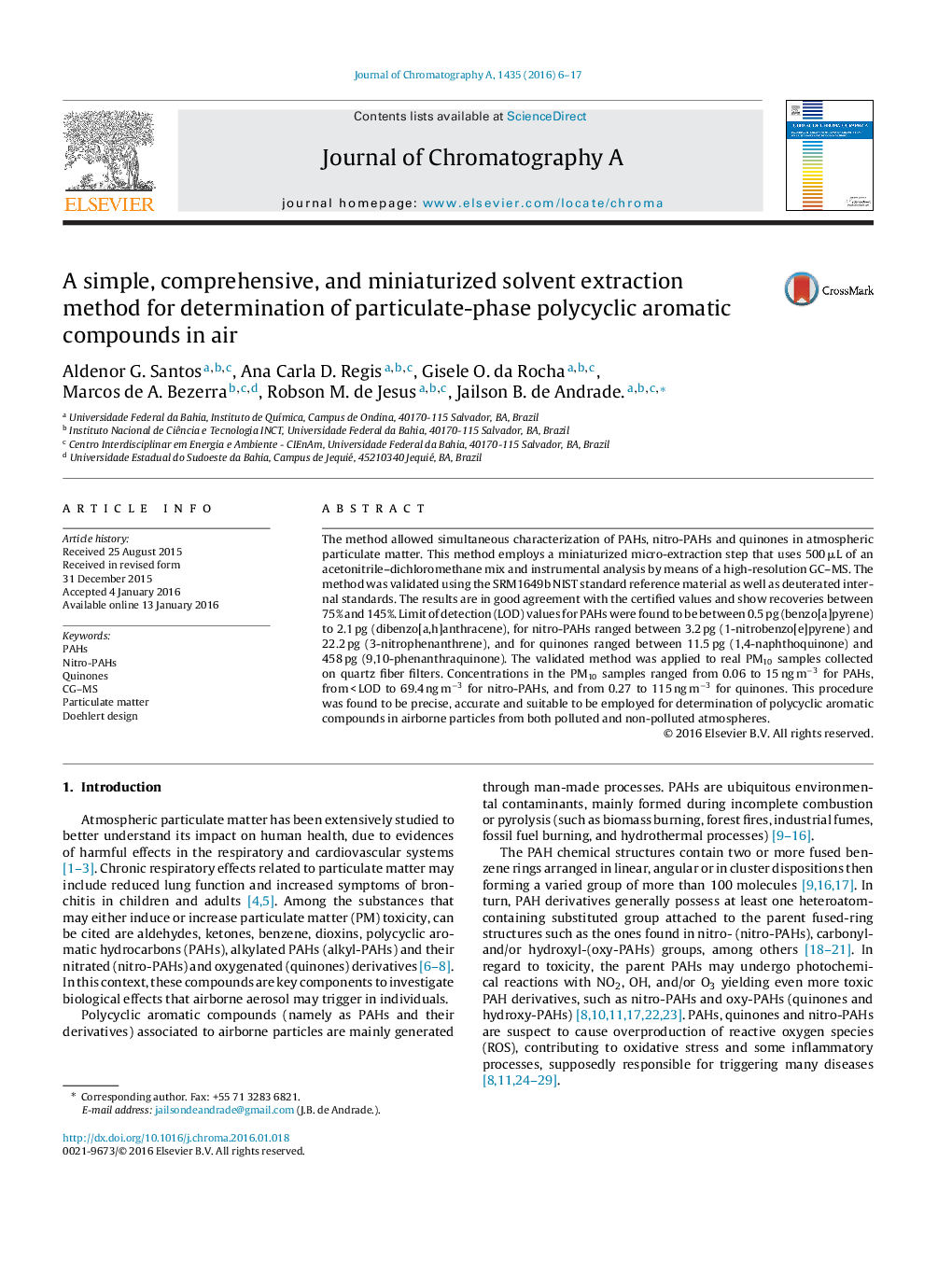| Article ID | Journal | Published Year | Pages | File Type |
|---|---|---|---|---|
| 1200541 | Journal of Chromatography A | 2016 | 12 Pages |
•A new method for polycyclic aromatic hydrocarbons determination in airborne samples was optimized.•PAHs were characterized in soot through solvent micro-extraction and GC–MSD.•The method allowed simultaneous characterization of PAHs, nitro-PAHs and quinones in particulate matter samples.
The method allowed simultaneous characterization of PAHs, nitro-PAHs and quinones in atmospheric particulate matter. This method employs a miniaturized micro-extraction step that uses 500 μL of an acetonitrile–dichloromethane mix and instrumental analysis by means of a high-resolution GC–MS. The method was validated using the SRM1649b NIST standard reference material as well as deuterated internal standards. The results are in good agreement with the certified values and show recoveries between 75% and 145%. Limit of detection (LOD) values for PAHs were found to be between 0.5 pg (benzo[a]pyrene) to 2.1 pg (dibenzo[a,h]anthracene), for nitro-PAHs ranged between 3.2 pg (1-nitrobenzo[e]pyrene) and 22.2 pg (3-nitrophenanthrene), and for quinones ranged between 11.5 pg (1,4-naphthoquinone) and 458 pg (9,10-phenanthraquinone). The validated method was applied to real PM10 samples collected on quartz fiber filters. Concentrations in the PM10 samples ranged from 0.06 to 15 ng m−3 for PAHs, from < LOD to 69.4 ng m−3 for nitro-PAHs, and from 0.27 to 115 ng m−3 for quinones. This procedure was found to be precise, accurate and suitable to be employed for determination of polycyclic aromatic compounds in airborne particles from both polluted and non-polluted atmospheres.
